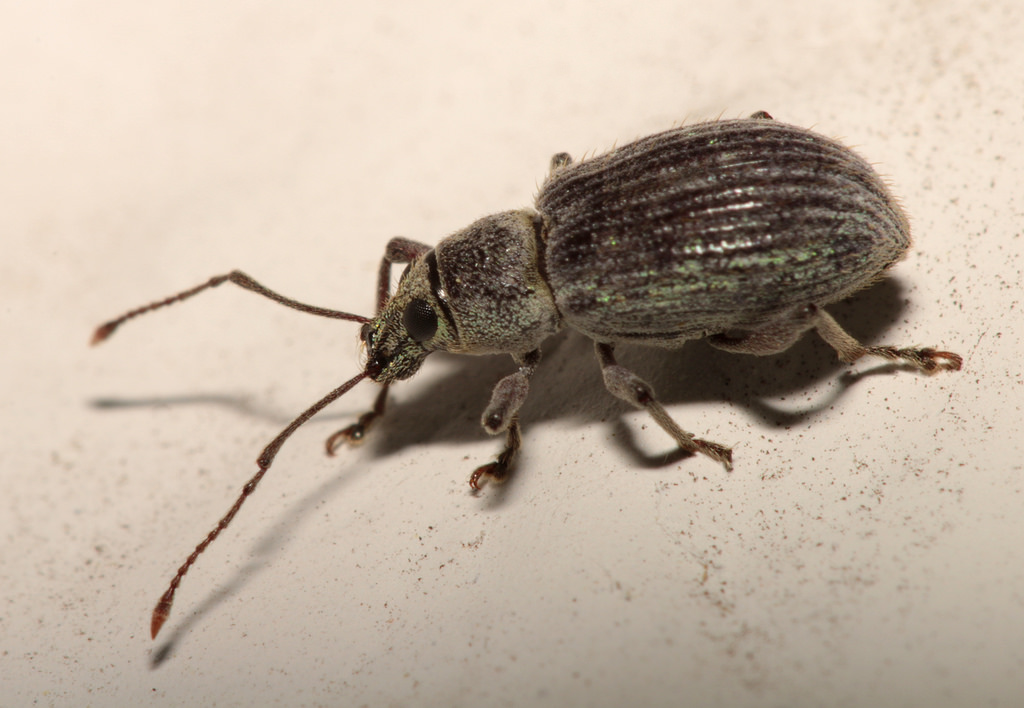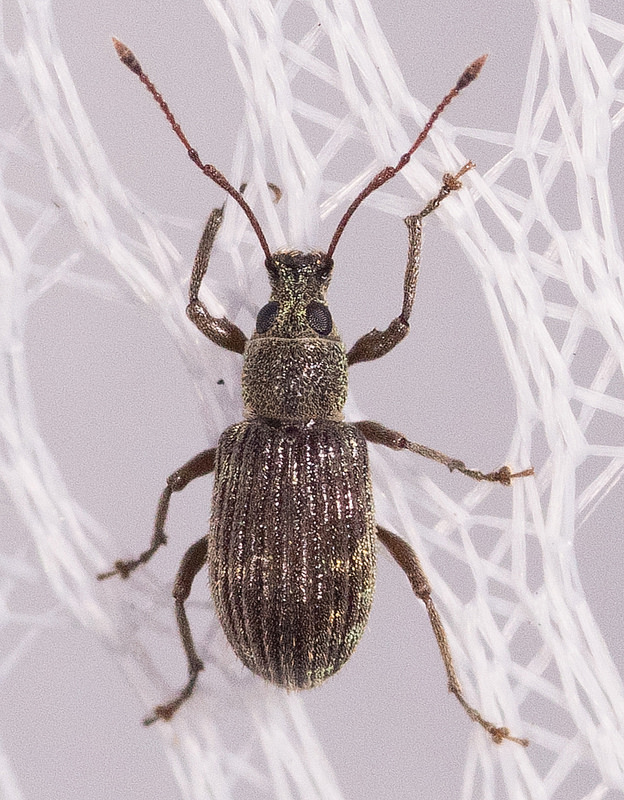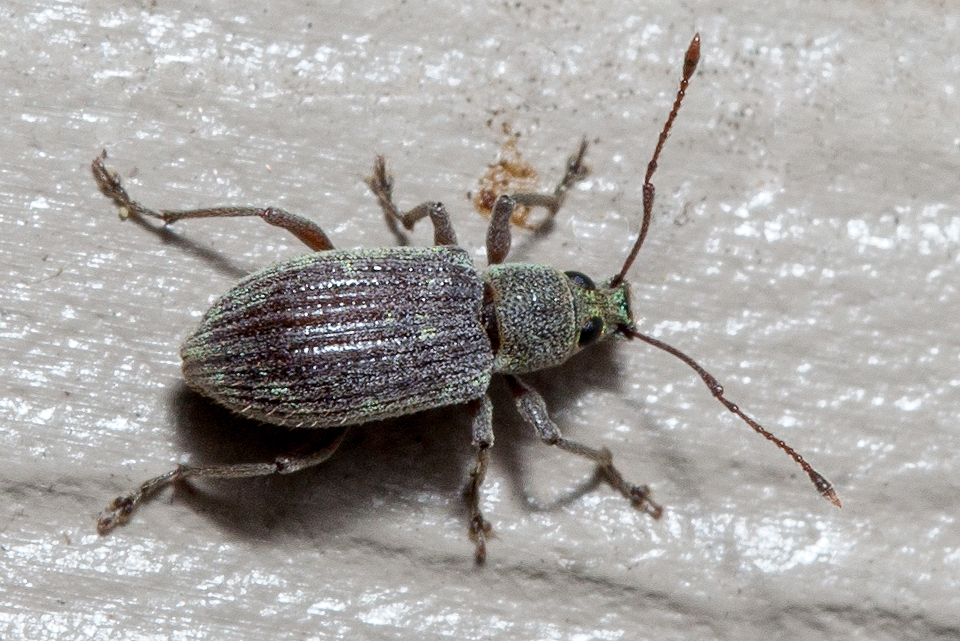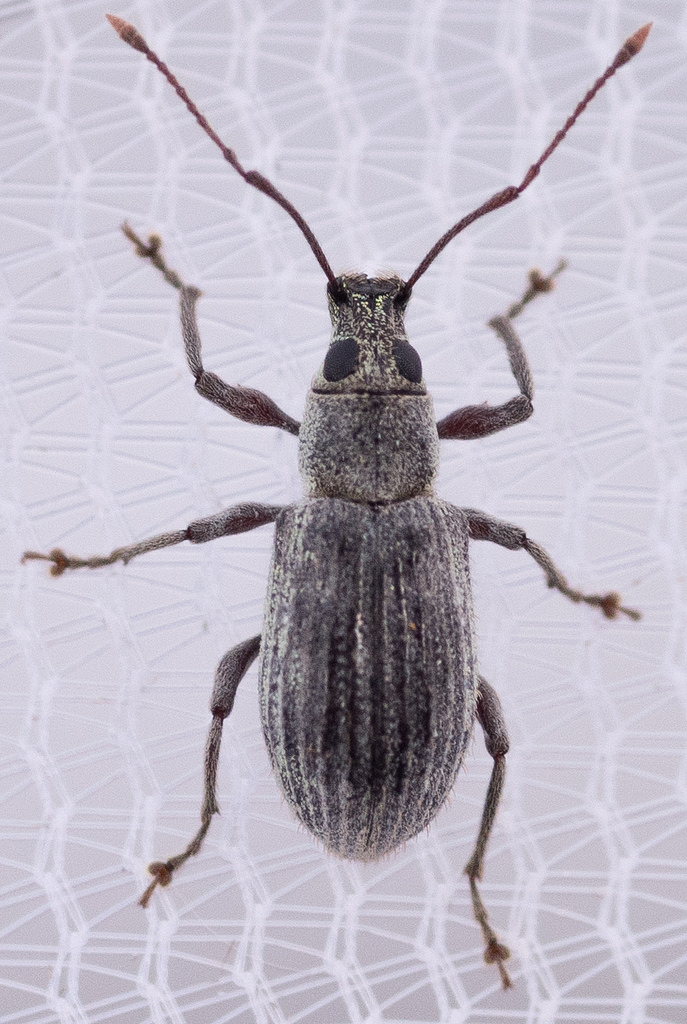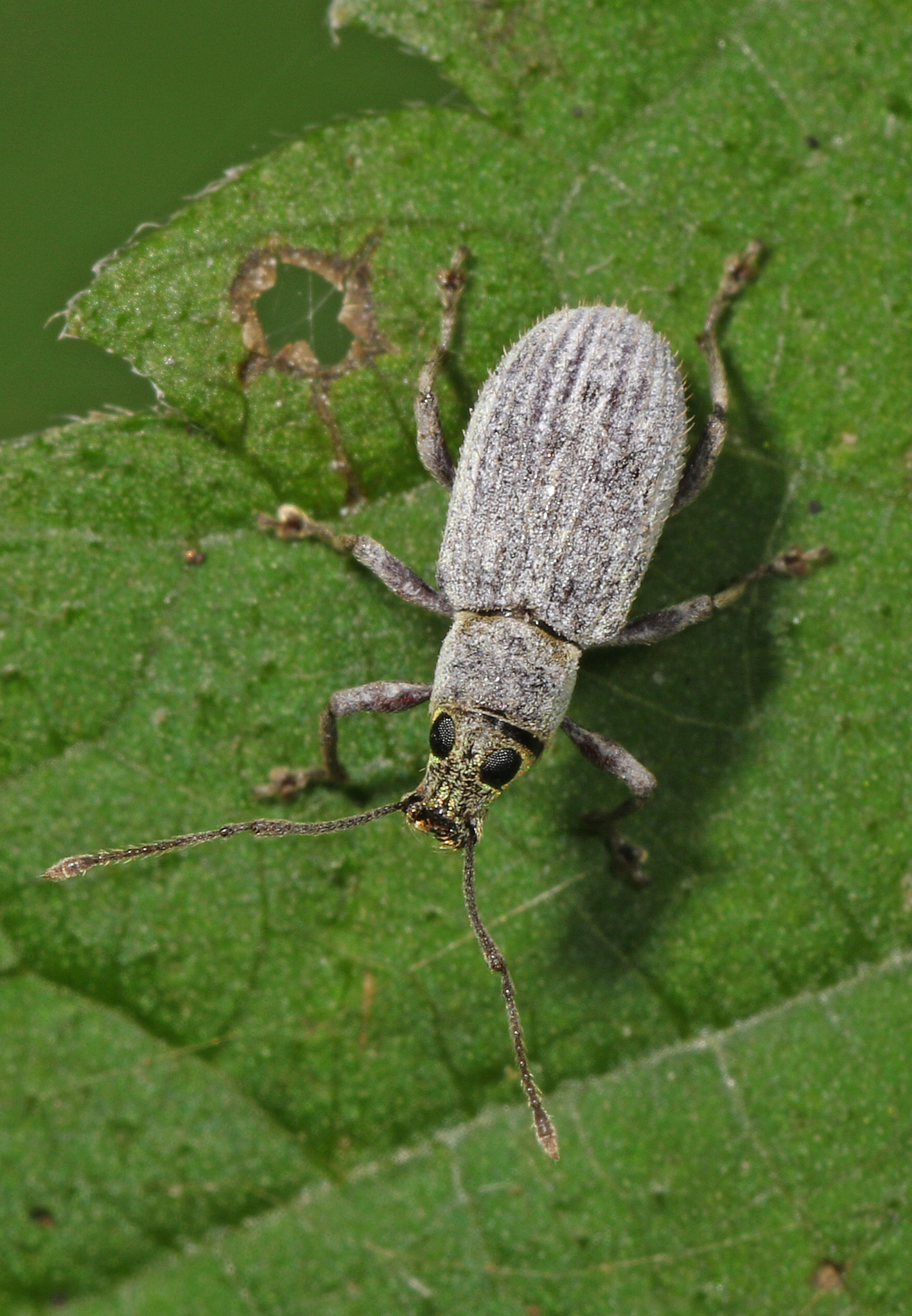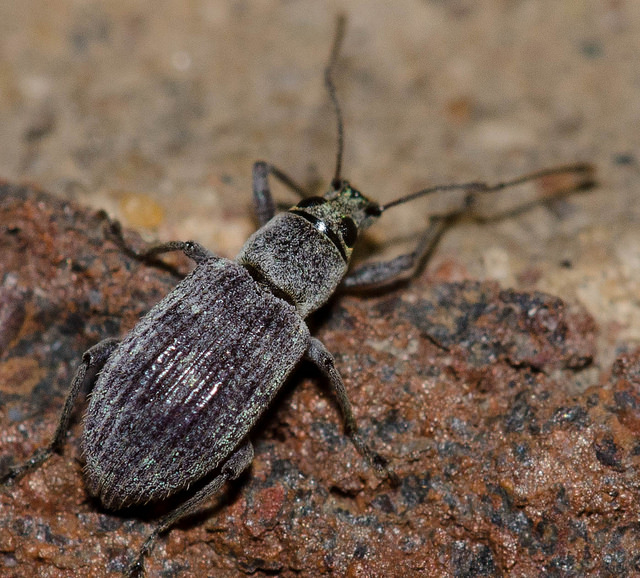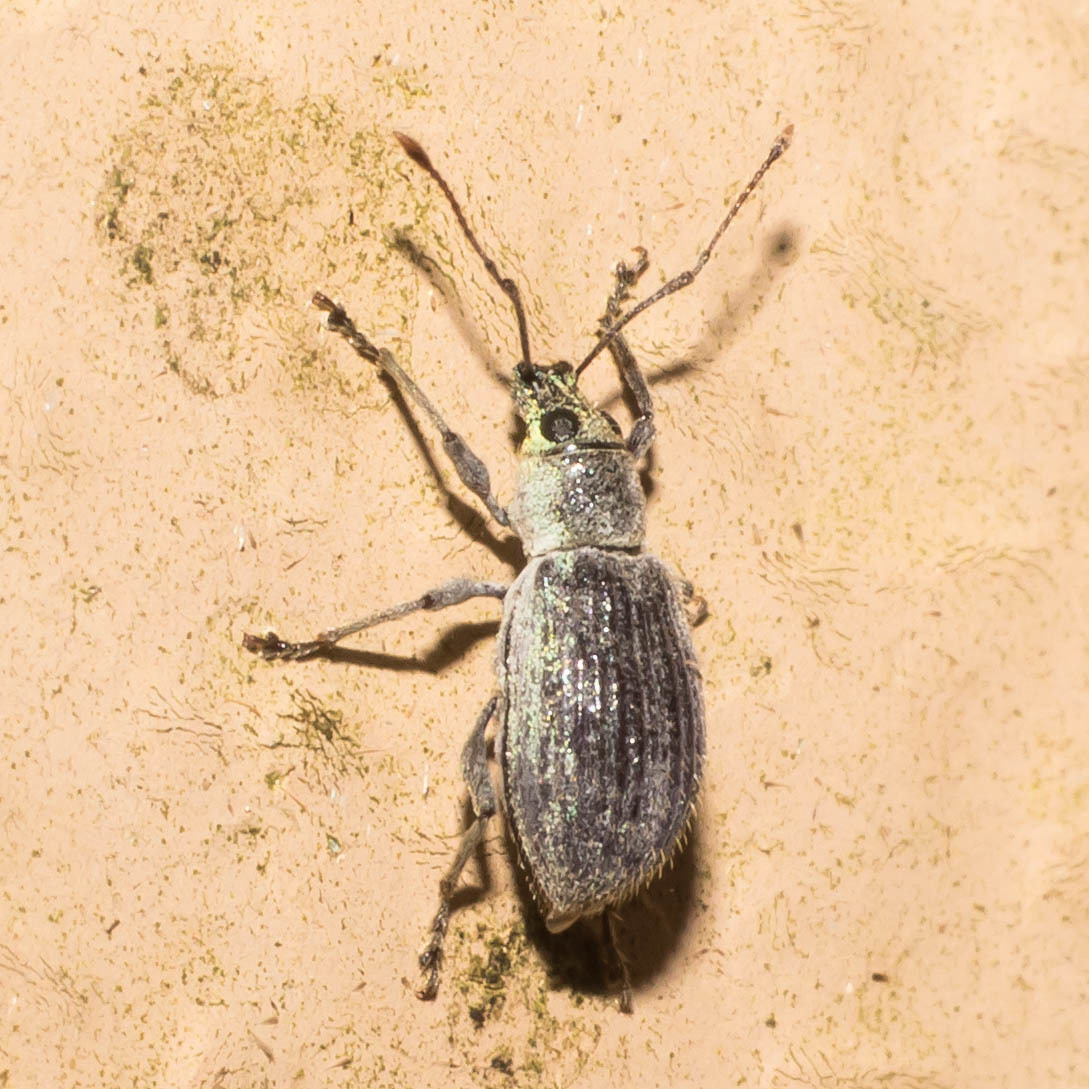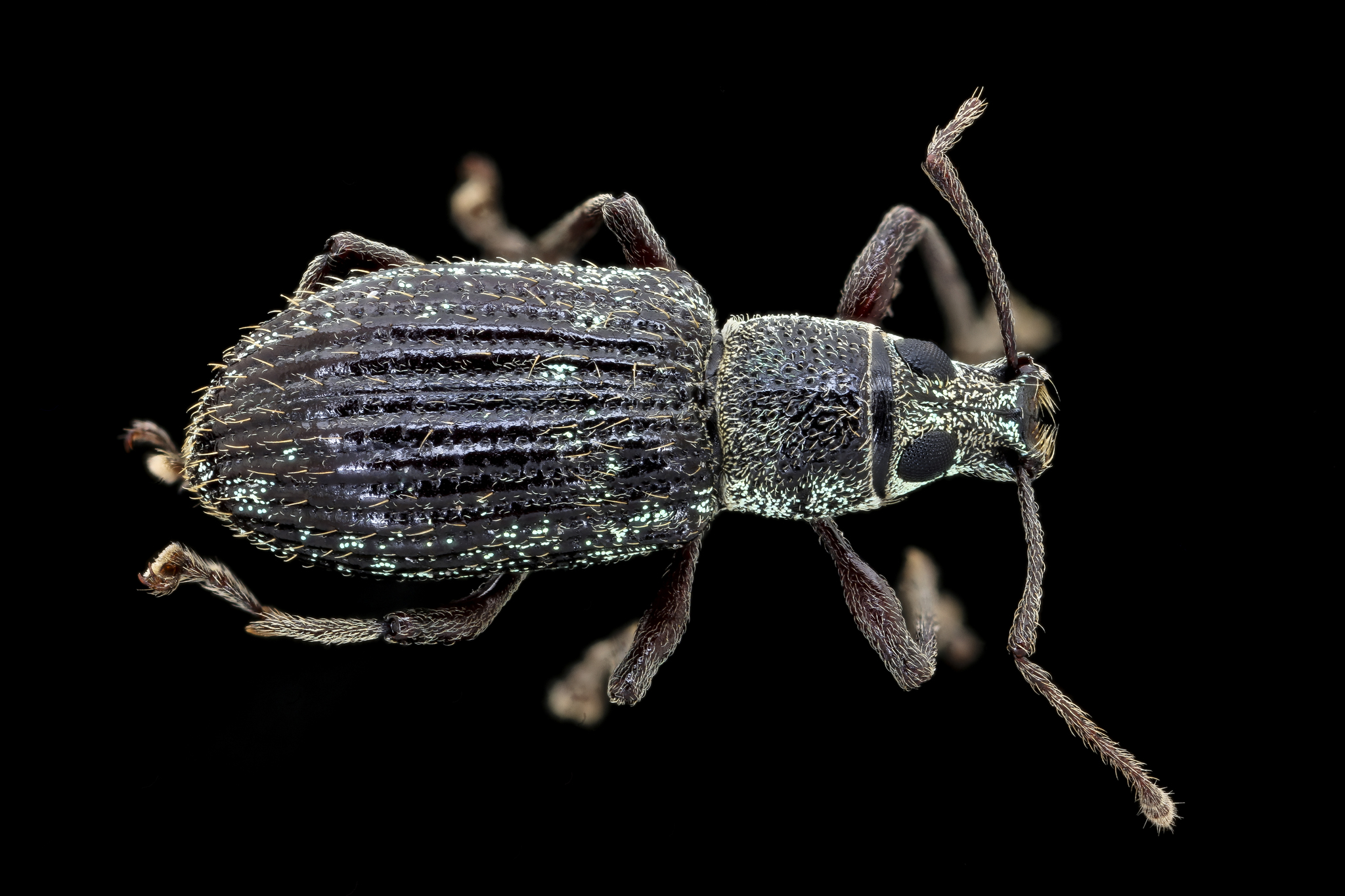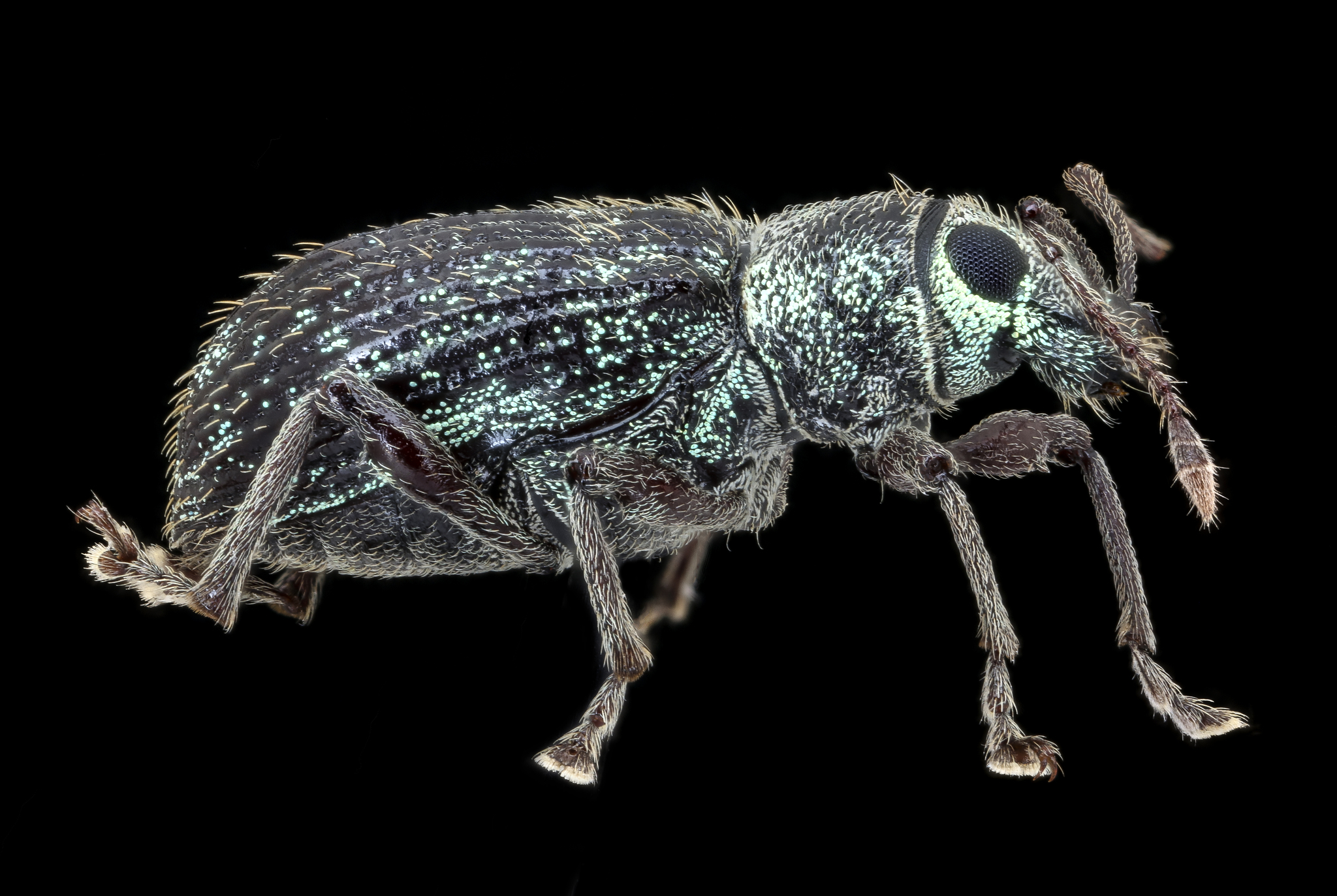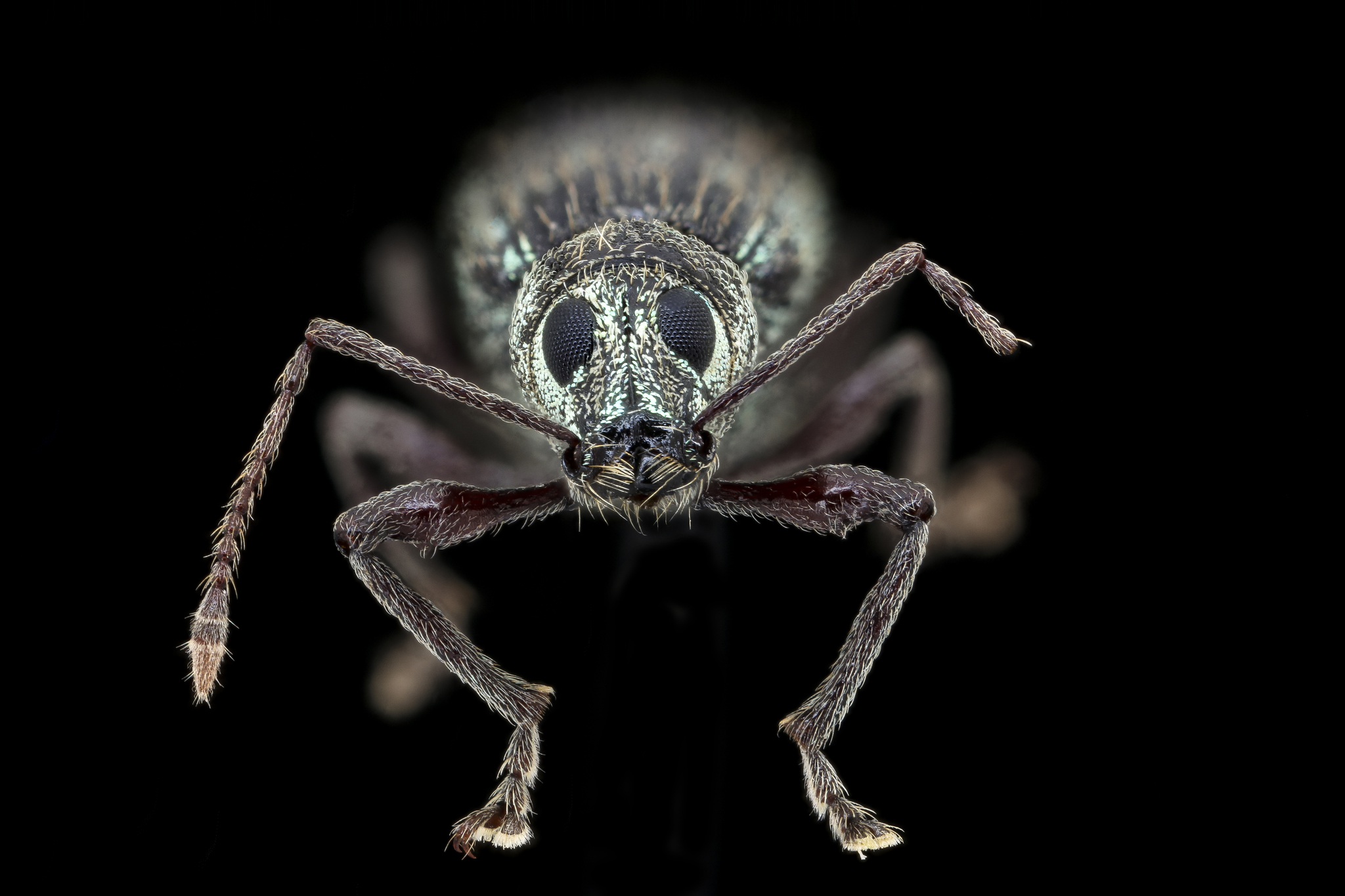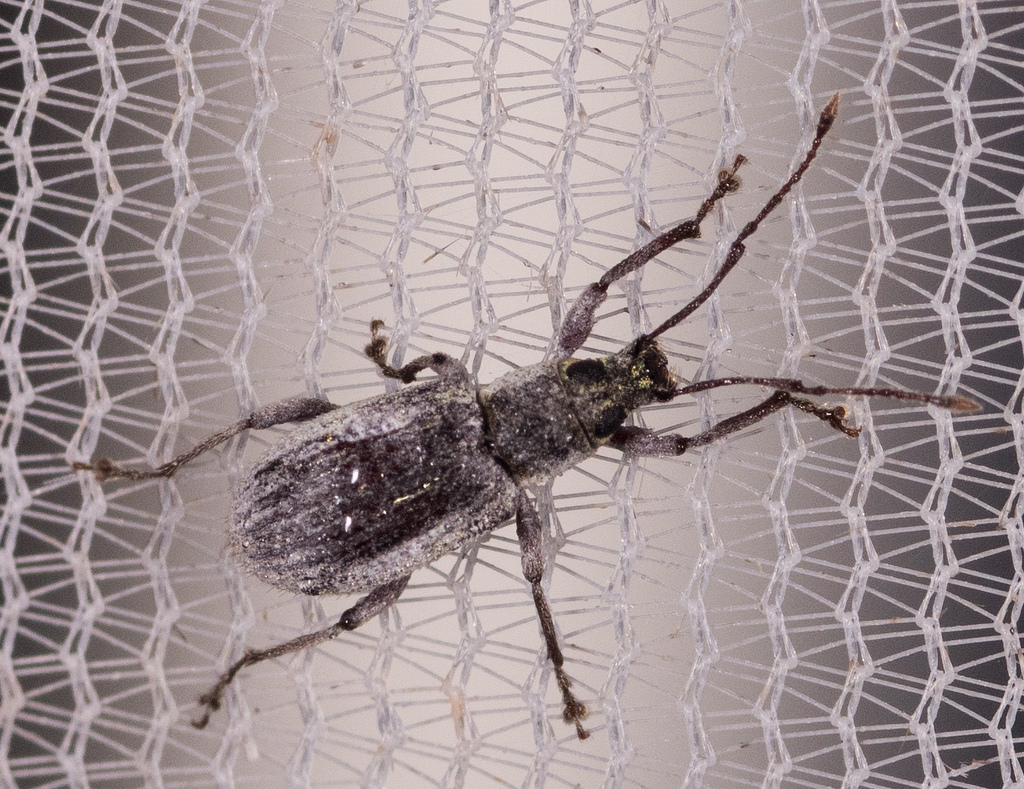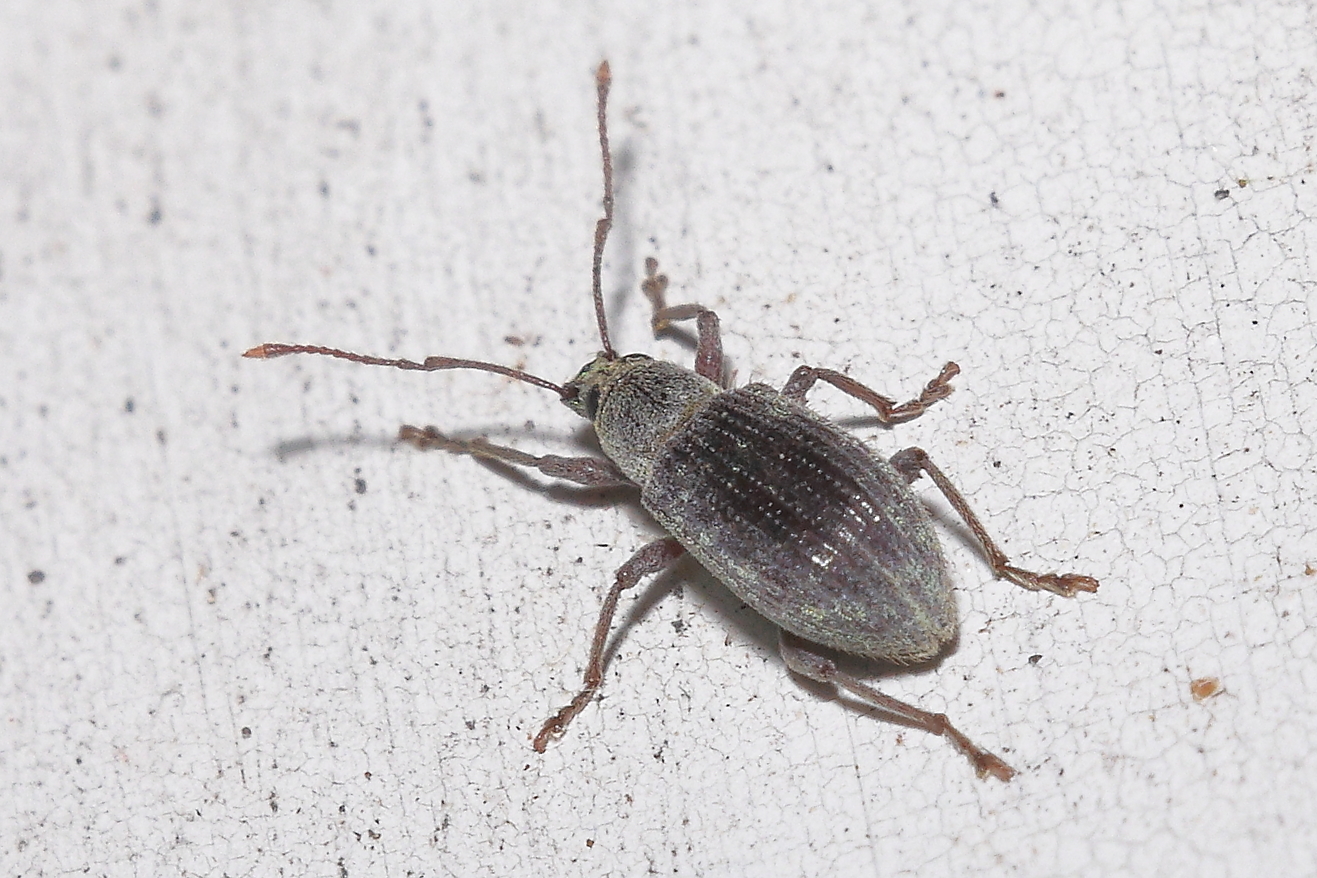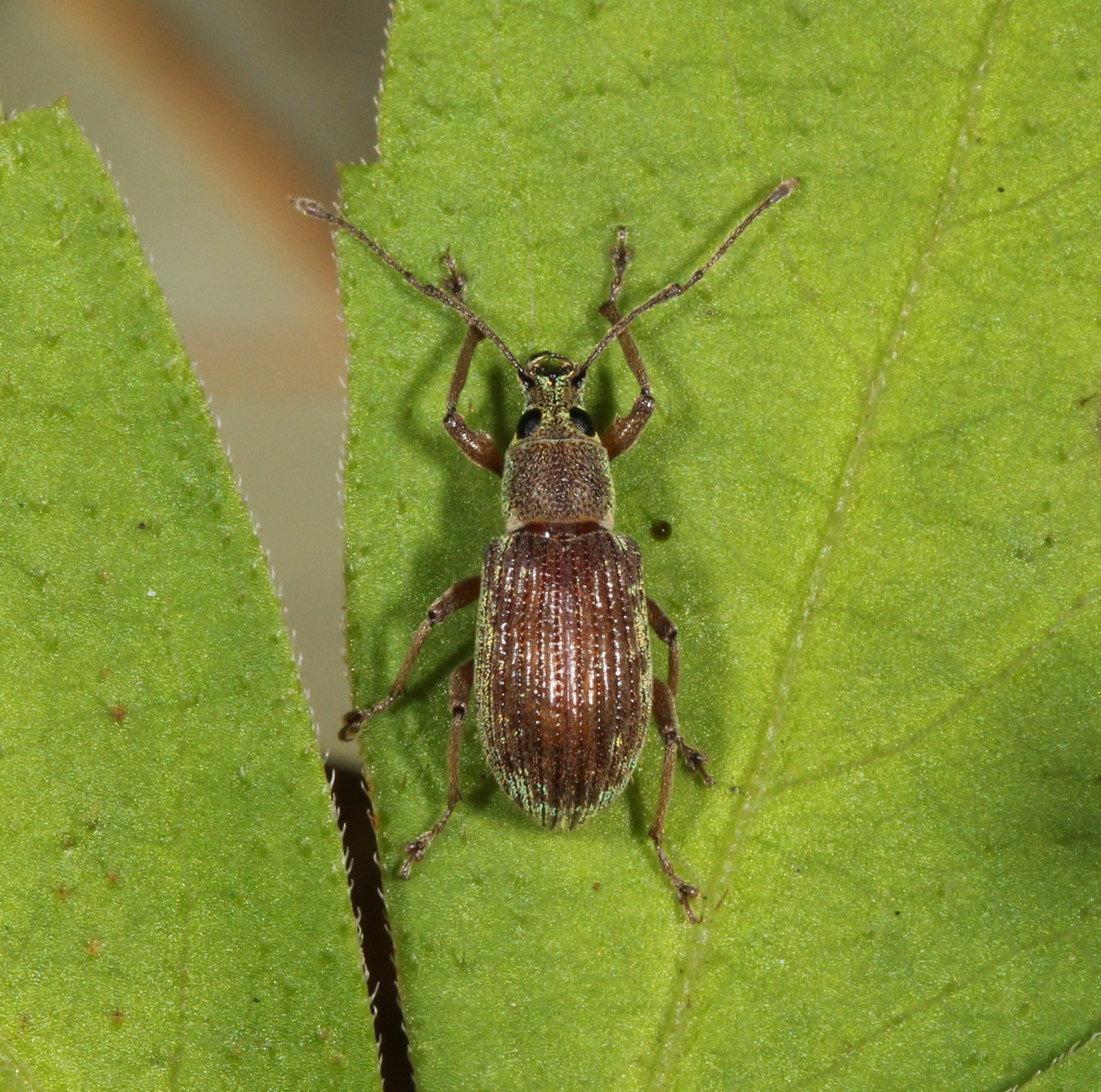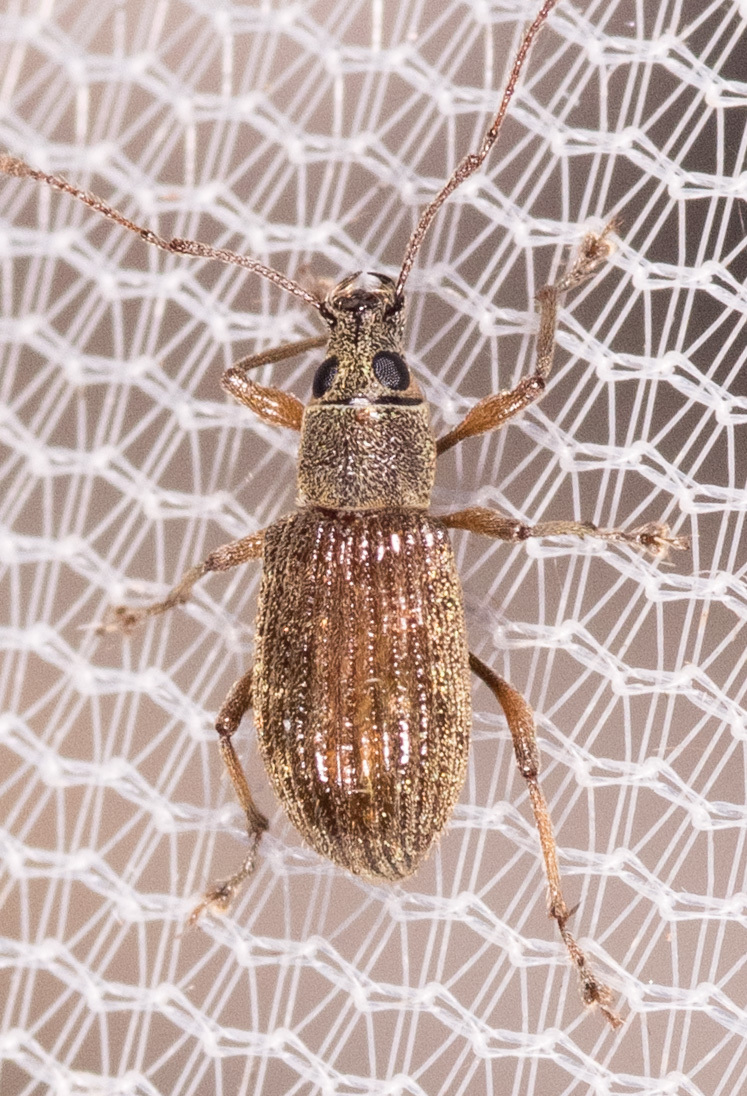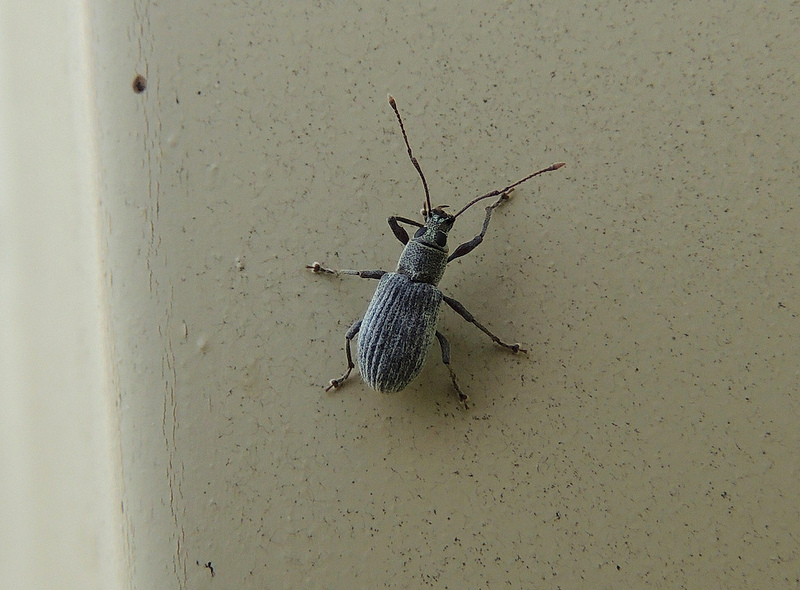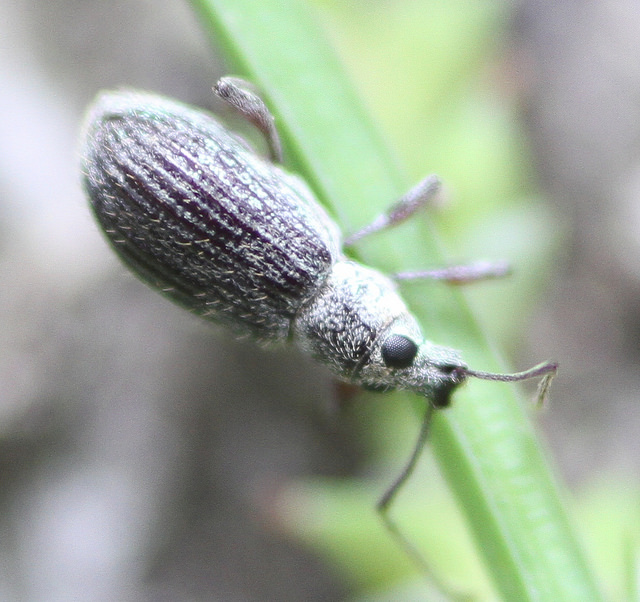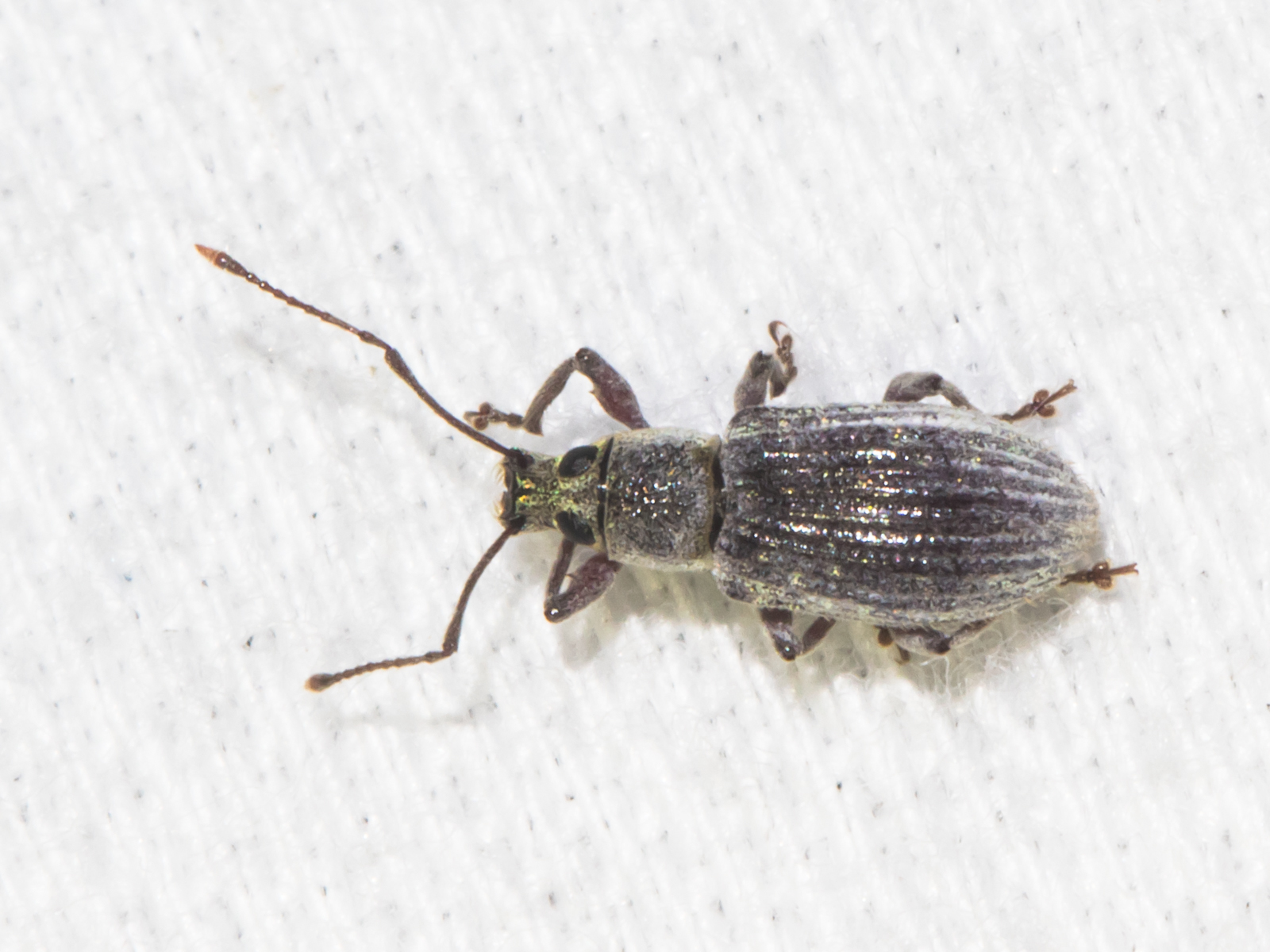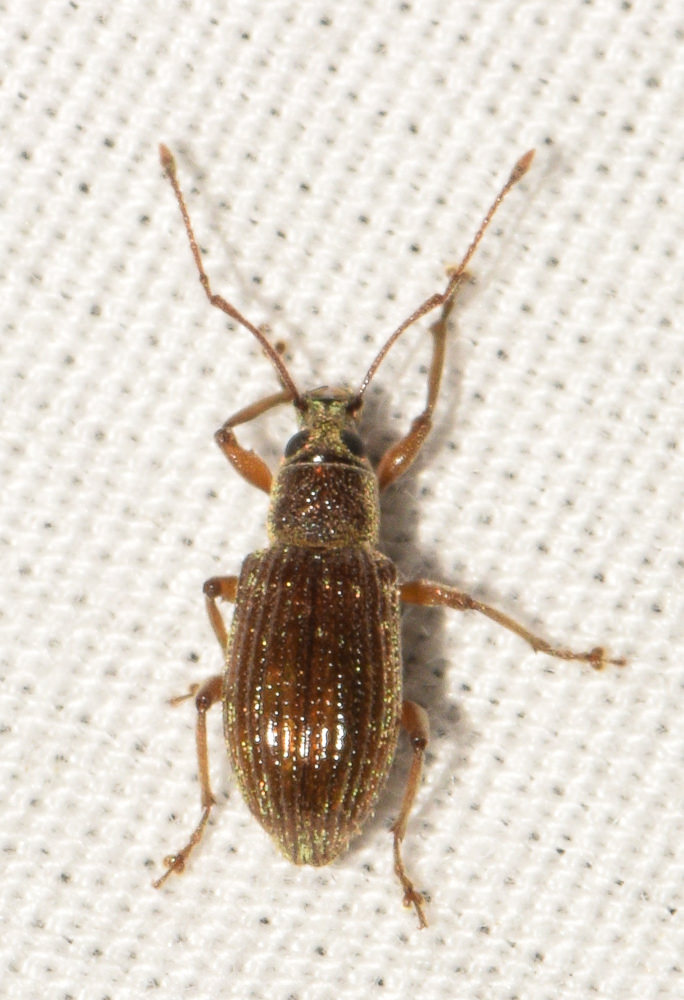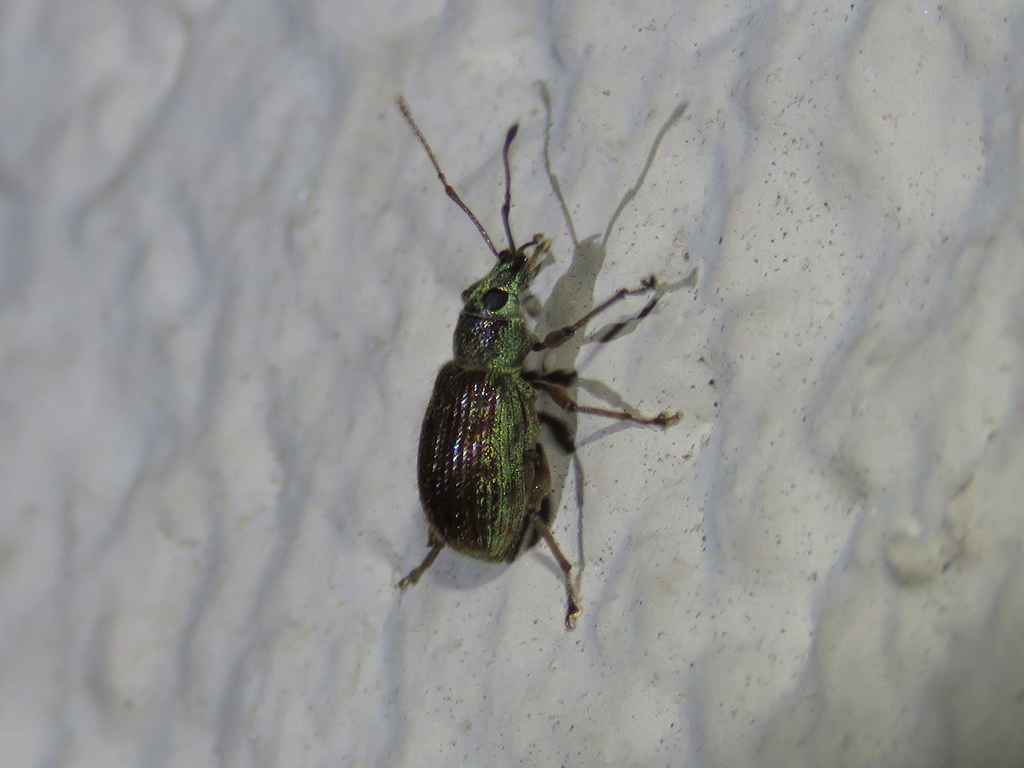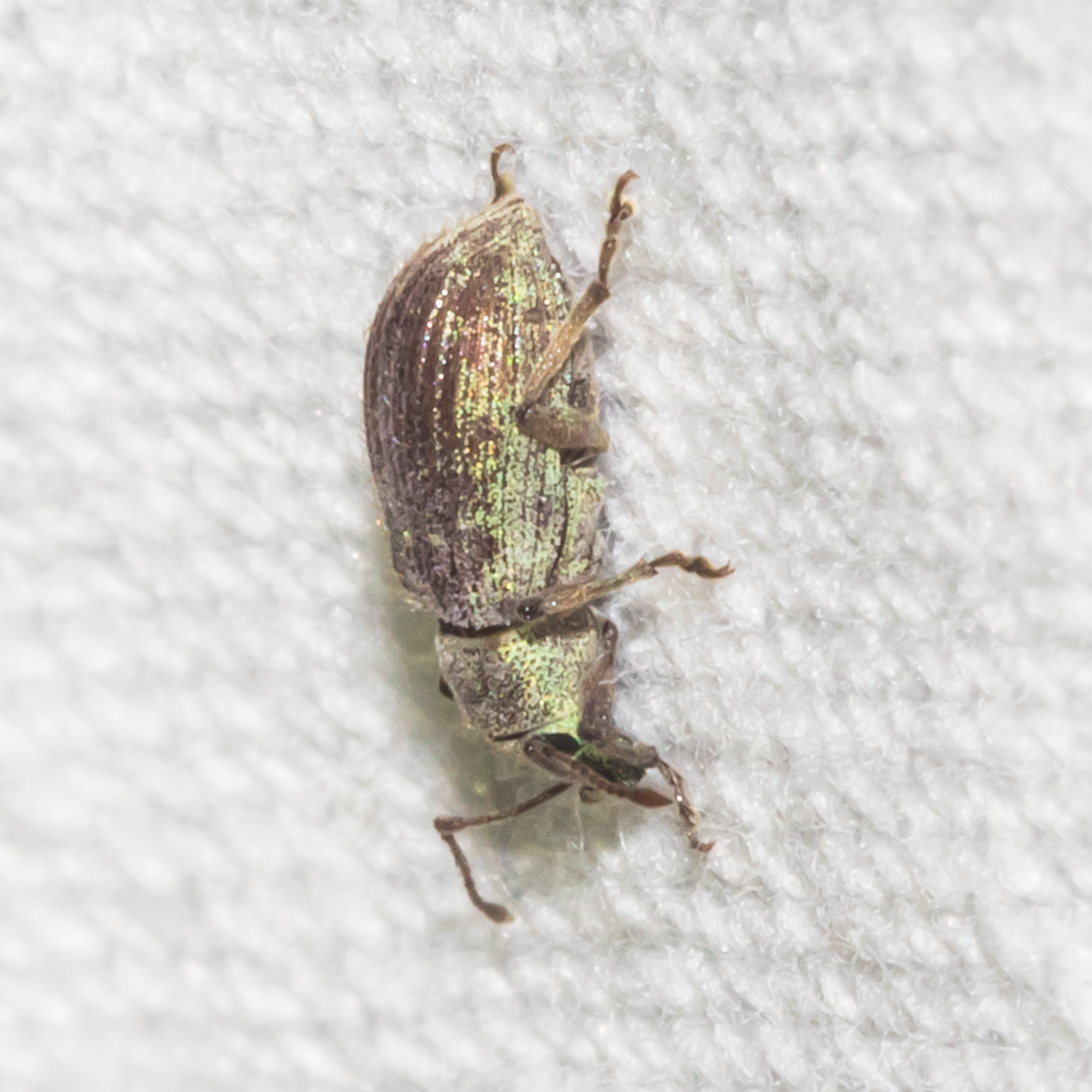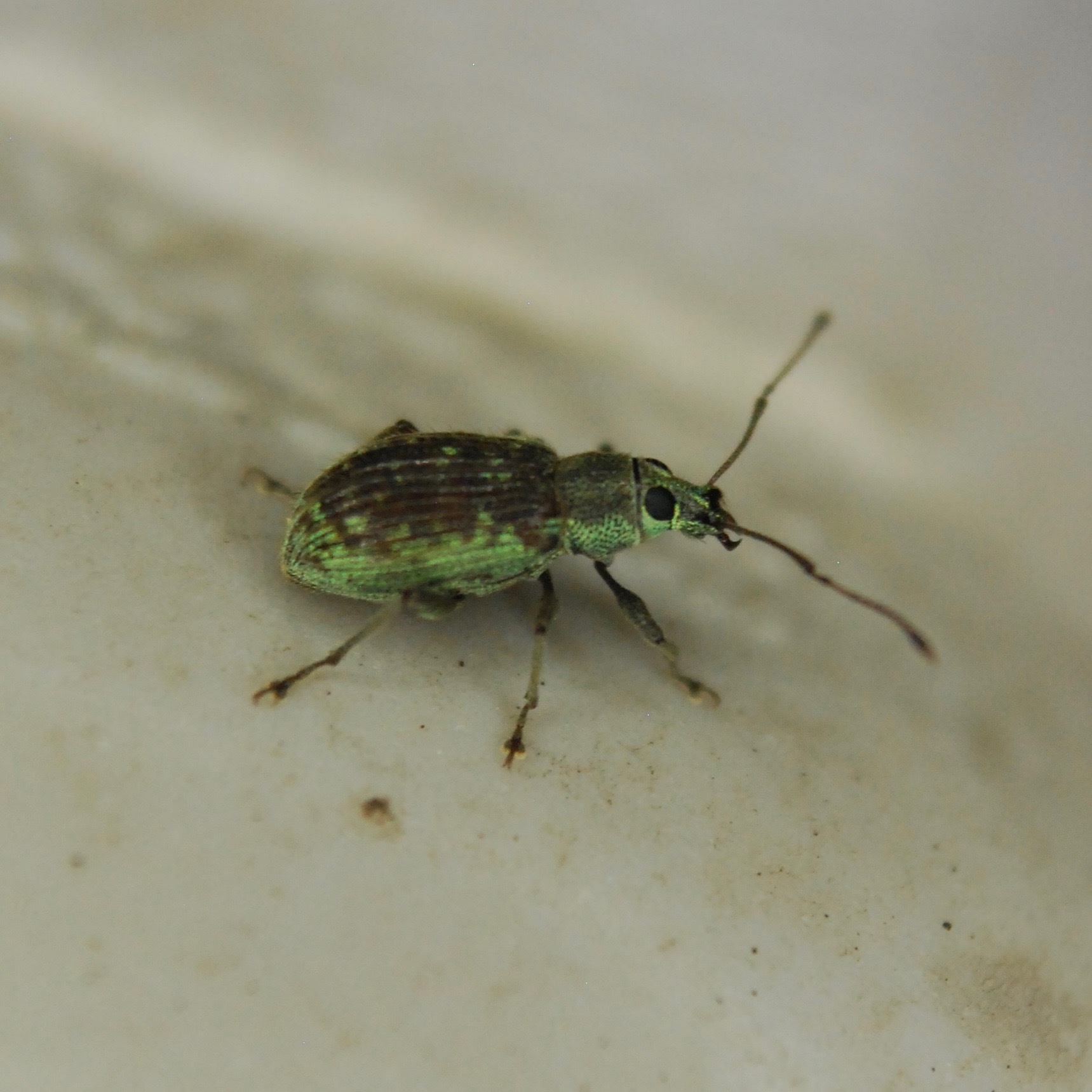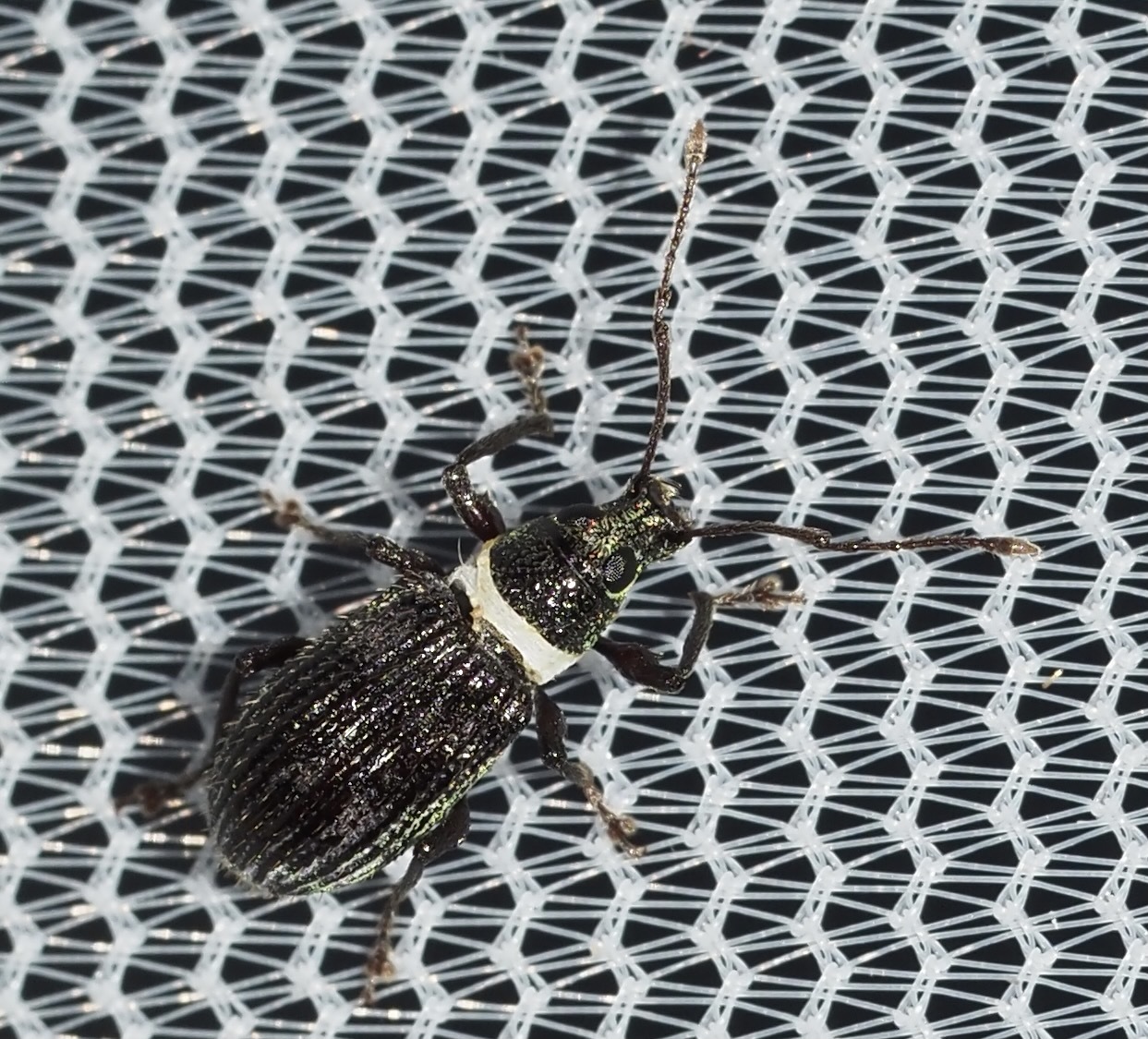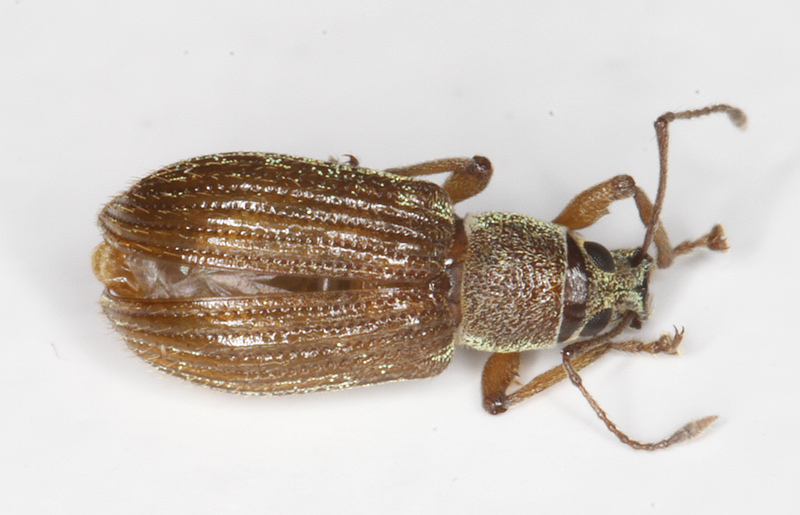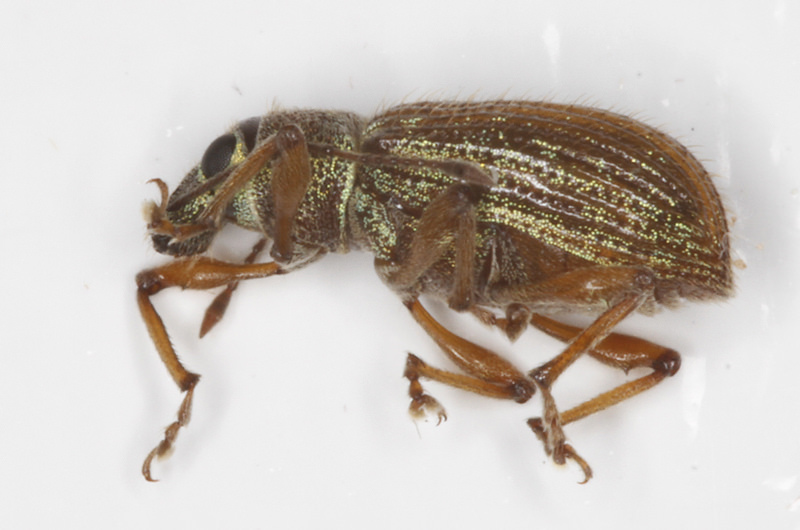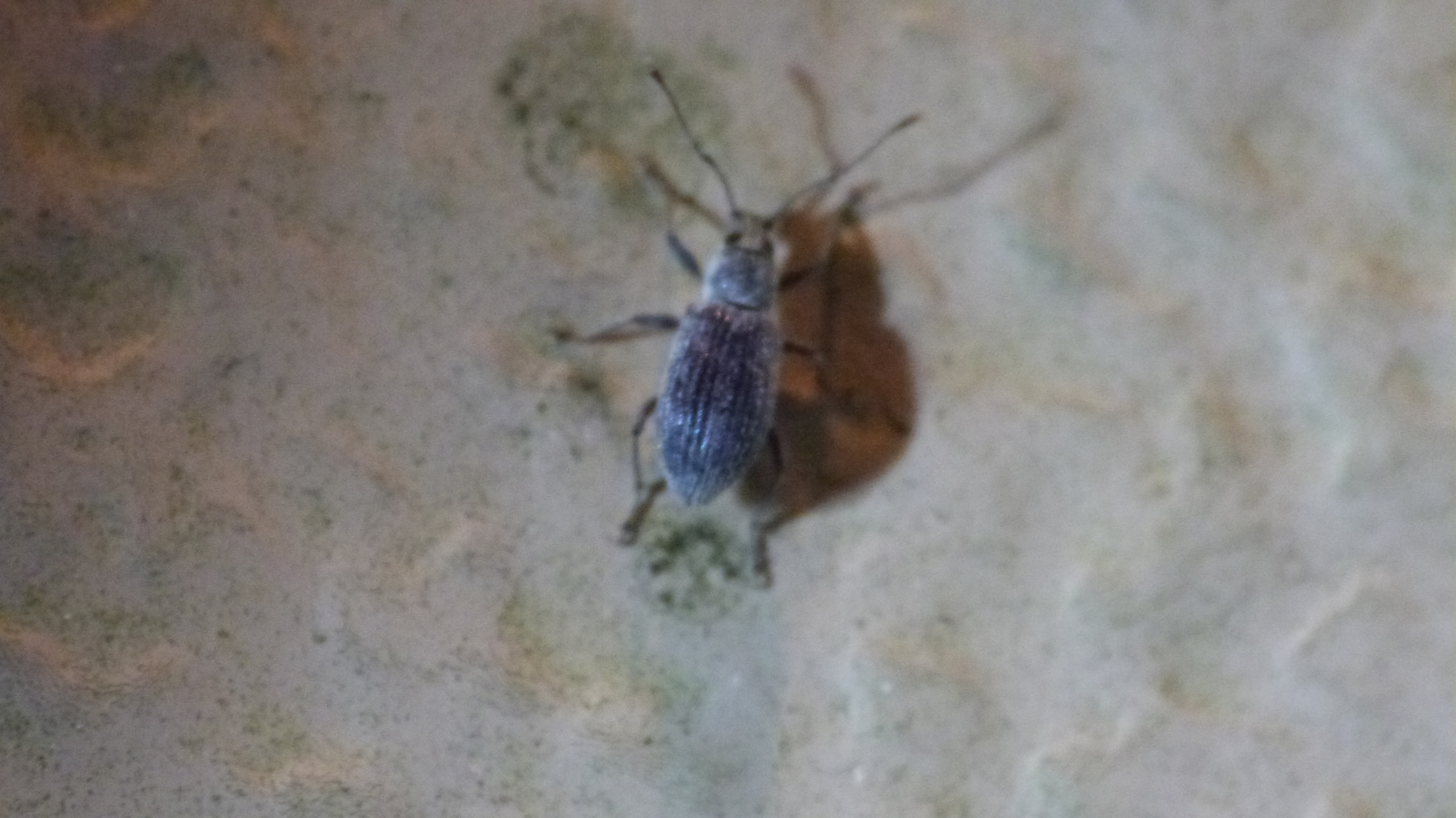Map Snapshot
























340 Records
Status
The Asiatic Oak Weevil "was introduced into the United States in 1933 (New Jersey) and now occurs throughout much of the East. Small, legless grubs associated with the roots of hardwood trees survive the fall, winter, and early spring. The grubs pupate and new adults emerge during the spring to feed on the leaves of oaks and chestnut. Asiatic oak weevils emerge in May and become most abundant in late June and early July. They feed on the margins of leaves, sometimes devouring everything but the main veins. This weevil takes shelter in leaves tied together by caterpillars. The weevils start laying eggs in soil in July and continue on into early fall" (NC State Extension, 2019).
Description
This weevil is small (1/4 to 1/3 inch long) and broad-nosed. It is usually greenish-gray, but if its scales are worn away, it may appear reddish-brown.
Relationships
Oak and chestnut leaves are the favored food of the Asiatic Oak Weevil. A bad infestation can lead to excessive leaf damage. American Chestnut (Castanea dentata) and closely related hybrids seem to be more susceptible than is Chinese Chestnut (Case, et al., 2016).
Seasonality Snapshot
Source: Wikipedia
| Cyrtepistomus castaneus | |
|---|---|

| |
| Scientific classification | |
| Domain: | Eukaryota |
| Kingdom: | Animalia |
| Phylum: | Arthropoda |
| Class: | Insecta |
| Order: | Coleoptera |
| Family: | Curculionidae |
| Genus: | Cyrtepistomus |
| Species: | C. castaneus
|
| Binomial name | |
| Cyrtepistomus castaneus (Roelofs, 1873)
| |
Cyrtepistomus castaneus, the Asiatic oak weevil, is a species of Asian broad-nosed weevil in the beetle family Curculionidae.[1][2][3][4] It is native to Asia, and was first found in North America in 1933. Larvae feed on root hairs in soil, whereas adult beetles are defoliators of Quercus and Acer rubrum trees.[5]


References
[edit]- ^ "Cyrtepistomus castaneus Report". Integrated Taxonomic Information System. Retrieved 2018-05-06.
- ^ "Cyrtepistomus castaneus species details". Catalogue of Life. Retrieved 2018-05-06.
- ^ "Cyrtepistomus castaneus". GBIF. Retrieved 2018-05-06.
- ^ "Cyrtepistomus castaneus Species Information". BugGuide.net. Retrieved 2018-05-06.
- ^ Frederick, Katy H.; Gering, Jon C. (January 2006). "A Field Study of Host Tree Associations of an Exotic Species, the Asiatic Oak Weevil [Cyrtepistomus castaneus (Roelofs 1873), Coleoptera: Curculionidae]". The American Midland Naturalist. 155 (1): 11–18. doi:10.1674/0003-0031(2006)155[0011:AFSOHT]2.0.CO;2.
Further reading
[edit]- Lobl, I.; Smetana, A., eds. (2013). Catalogue of Palaearctic Coleoptera, Volume 7: Curculionoidea I. Apollo Books. ISBN 978-90-04-26093-1.
- Lobl, I.; Smetana, A., eds. (2013). Catalogue of Palaearctic Coleoptera, Volume 8: Curculionoidea II. Apollo Books. ISBN 978-90-04-25916-4.
External links
[edit] Media related to Cyrtepistomus castaneus at Wikimedia Commons
Media related to Cyrtepistomus castaneus at Wikimedia Commons


